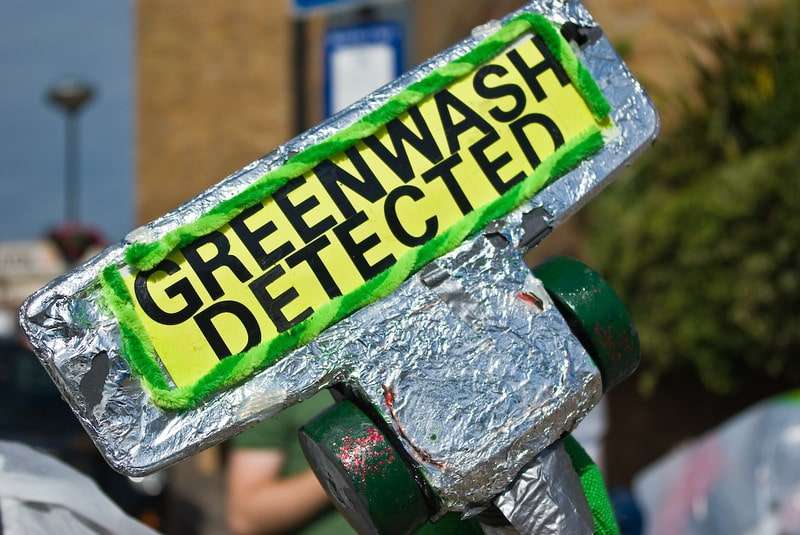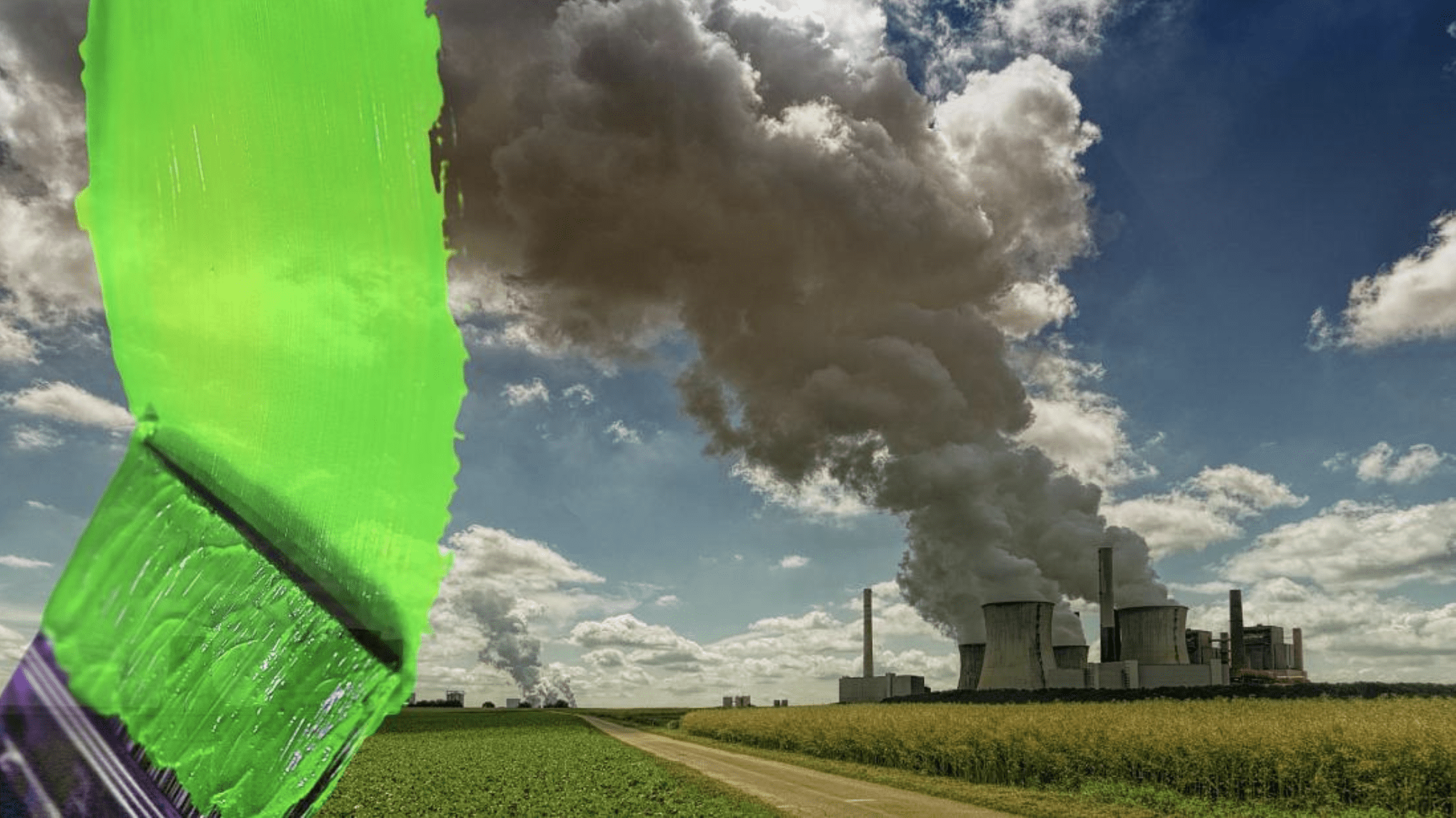
Greenwashing is essentially when a company or organisation spends more time and money on marketing themselves as being sustainable than on actually minimising their environmental impact. It’s a deceitful advertising method to gain favour with consumers who choose to support businesses that care about bettering the planet. Greenwashing takes up valuable space in the fight against environmental issues, like climate change, plastic ocean pollution, air pollution and global species extinctions.
The term “greenwashing” was coined by environmentalist Jay Westerveld in 1986 in an essay criticizing the irony of the “save the towel” movement in hotels at the time. He noticed the vast amount of waste he had come across throughout the rest of the hotel, where there were no visible signs of efforts being made to become more sustainable. He said that instead, the hotel was simply trying to reduce costs by not having to wash towels as much but while trying to market it as being eco-friendly.
Why Do Companies Engage in Greenwashing?
It’s simple – being seen as ethical drives profitability. A report by McKinsey found that Gen Z (people born roughly between 1996 and 2010) are more likely to spend money on companies and brands seen to be ethical. Another, Nielson’s Global Corporate Sustainability Report, found that 66% of consumers would spend more on a product if it comes from a sustainable brand, and that jumps to 73% among millennials. Therefore, companies have a financial incentive to be more socially conscious, or at least appear to.
However, another reason that companies engage in greenwashing is far less insidious – they simply don’t know that they’re doing it. Many companies just don’t have the expertise to know what is truly environmentally beneficial, and what isn’t. In Australia, a company switched to using “biodegradable” plastic, which technically didn’t fully degrade, but instead just breaks down into smaller parts unless it’s processed in a digester specifically designed to create the conditions for biodegradation. What the company actually needed was a compostable bag, which is a different thing entirely. The consumer affairs watchdog in the country actually fined them to stop selling the product as it was completely false.
It is very likely that this company intended to be eco-friendly, but was caught out due to their lack of research on what actually constitutes as sustainable materials. This is why it’s so important for companies to do meaningful research on how to be sustainable and apply it to all stages of their operations, not only what consumers see.
What Are Some Examples of Greenwashing?
Unfortunately, there are many examples of organisations engaging in greenwashing. A classic example is Volkswagen, who admitted to cheating emissions tests by fitting various vehicles with a “defect” device, software which could detect when it was undergoing an emissions test and altering the performance to reduce the emissions level. All of this was while it was touting the low-emissions and eco-friendly features of its vehicles in marketing campaigns. In actuality, these engines were emitting up to 40 times the allowed limit for nitrogen oxide pollutants.
Another is the fossil fuel giant BP, who changed their name to Beyond Petroleum and put solar panels on their gas stations, and then came under fire for their green misdirection.
In 2018, Nestlé released a statement saying that it had “ambitions” for its packaging to be 100% recyclable or reusable by 2025. However, environmental groups were quick to point out that the company hadn’t released clear targets, a timeline to accompany its ambitions or additional efforts to help facilitate recycling by consumers. Greenpeace reacted to this by releasing its own searing statement, in which it said, “Nestlé’s statement on plastic packaging includes more of the same greenwashing baby steps to tackle a crisis it helped to create. It will not actually move the needle toward the reduction of single-use plastics in a meaningful way, and sets an incredibly low standard as the largest food and beverage company in the world.” In 2020, Nestlé, along with Coca-Cola and PepsiCo, were named the world’s top plastic polluters for the third year in a row.
Finally, in 2017, Walmart paid USD$1 million to settle claims that it sold plastics misleadingly touted as being eco-friendly. In the US, California state law bans the sale of plastics labeled as “compostable” or “biodegradable,” as environmental officials have determined such claims are misleading without disclaimers about how quickly the product will biodegrade in landfill.
Half of the world’s disposable plastic has been produced in the last 16 years, and 91% of the plastic produced globally is not recycled. This is why companies making claims to be making “reusable plastic” are so harmful – we need to be creating less plastic. It’s all well and good to be creating plastic that is recyclable but the above statistics show that this is meaningless if this plastic is still going to end up in a landfill. Many types of plastic are difficult to recycle, either because countries don’t have the necessary machinery or because people simply don’t have the time/ will to recycle their goods.
Fortunately, some countries are starting to crack down on marketing that greenwashes. In 2019, Norway’s Forbrukertilsynet (Consumer Authority) ruled last year that fast fashion brand H&M was under investigation for its supposedly ethical ‘Conscious’ collection. H&M and other fast fashion retailers are renowned for exploiting the vagueness of green terminology to appear more environmentally conscious and sell more clothes. This is a problem, because fast fashion is one of the biggest polluters on the planet, with more than £140 million worth of clothing ending up in UK landfills every year.
How Can You Spot Greenwashing and Avoid It?
- Watch out for “fluffy language,” ie. words or terms with no clear meaning (eg “eco-friendly,” “produced sustainably,” etc)
- Declarations from a company that it is slightly greener than the rest, even if the rest are pretty terrible (eg. BP placing solar panels on its gas stations and saying that it is “working to be more sustainable”)
- “Greening” dangerous products to make it seem safe (eg, “eco-friendly” cigarettes)
- Using jargon or information that only a scientist could check or understand
- Providing no proof of a claim
- Presenting totally fabricated claims or data as fact
- Emphasising one tiny green attribute when everything else is dirty (eg again, BP and their solar panels)
- Companies that aren’t transparent or open, and don’t admit to making mistakes
Besides watching out for this behaviour from companies, there are also some online tools and search engines, such as Project Cece and Ethical Made Easy, which can help you to find sustainable brands, and avoid ones that simply pretend to be sustainable.
The sustainable landscape today is not like in Jay Westerveld’s time in the 80s – we have the means to research brands we invest our time and money in. We have immense power as consumers; we create the landscape that businesses operate in, so where our money goes, their focus goes. We need to make sure that this focus goes towards sustainability. Businesses cannot get away with greenwashing anymore; as the climate crisis accelerates, we simply can’t waste any time in shifting to more eco-friendly practices.
ကြော်ညာ တွေဆိုတာ အောက် ပြတဲ့ ဟာတွေဖြစ်တယ်။ ကလစ်ပြီး သူတို့ website မှာ အနဲဆုံး ၁ minute လောက်နေပေးပါ
ကြော်ညာ 2
++++++++++++++

